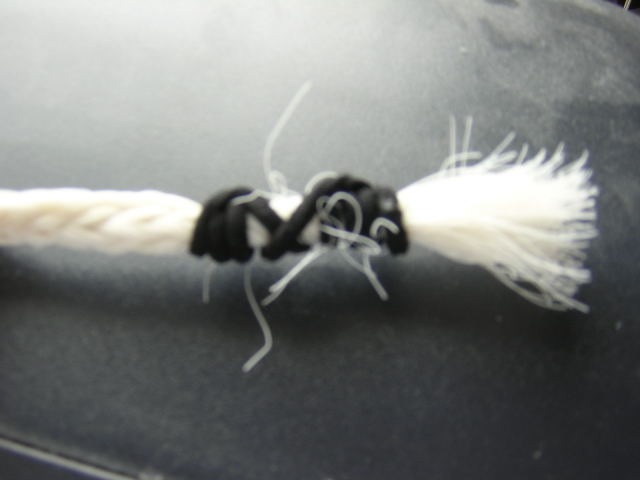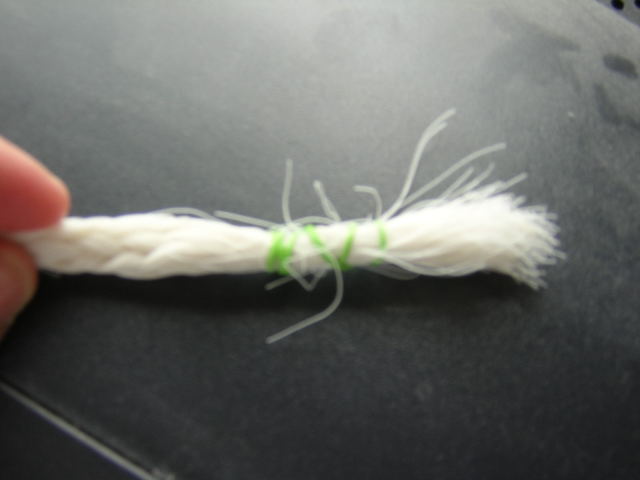Here is the rope release with the ponytail holder at the end

To keep the release from fraying, I wrapped a small rubber band around the loose end. It should be too small to catch the trick rope when released. If it does catch, the band is so skinny that it should just break. If any elastic compunds are to break, the rubber bands are a much better option than muscles, tendons, and ligaments.
Here is my low-profile rope release

I received advice on the subject in a post to skifly.com. A VERY good tricker suggested that I not put anything at the end, and just let the rope release fray out. When it frays too much, make a new rope release. I think this tiny rubber band should provide the best of both worlds. I just don't see how my rope could hang up on it. The rubber band is just too delicate. I will find out soon enough.
By the way, I am still a believer in the rope release. Rope release vs. mechanical release is an emotionally charged topic among trickers.
No comments:
Post a Comment